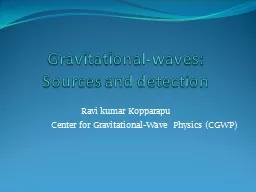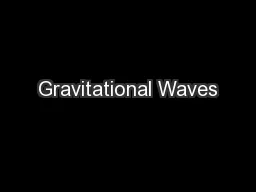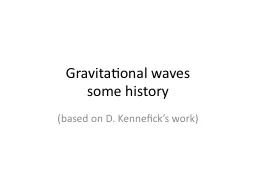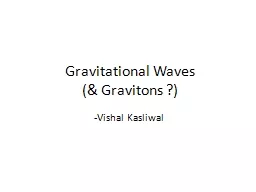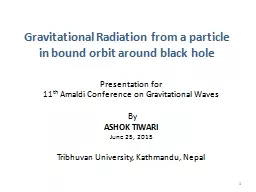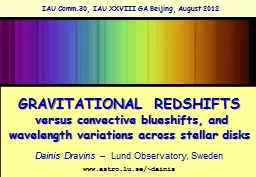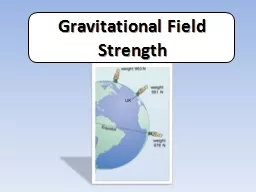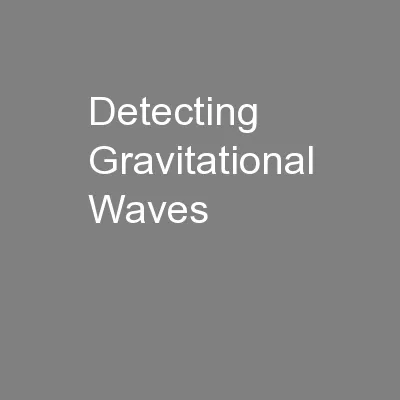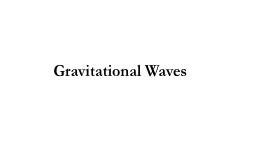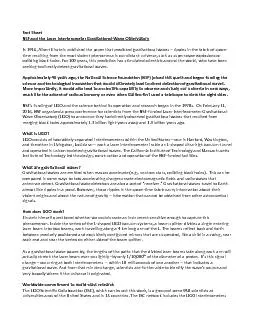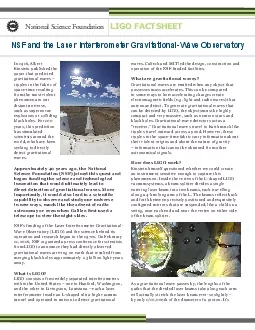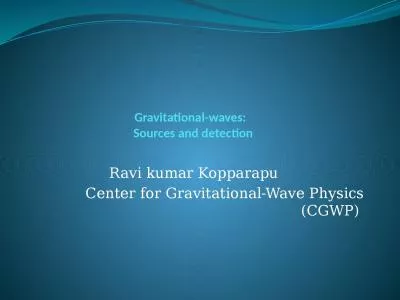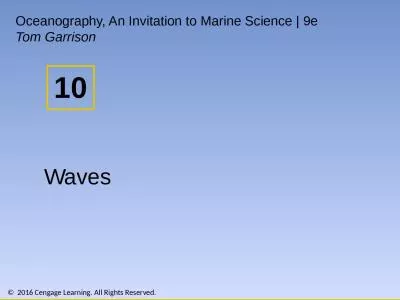PPT-Gravitational-waves:
Author : karlyn-bohler | Published Date : 2016-04-29
Sources and detection Ravi kumar Kopparapu Center for GravitationalWave Physics CGWP Gravity Einsteins General theory of relativity Gravity is a manifestation
Presentation Embed Code
Download Presentation
Download Presentation The PPT/PDF document "Gravitational-waves:" is the property of its rightful owner. Permission is granted to download and print the materials on this website for personal, non-commercial use only, and to display it on your personal computer provided you do not modify the materials and that you retain all copyright notices contained in the materials. By downloading content from our website, you accept the terms of this agreement.
Gravitational-waves:: Transcript
Sources and detection Ravi kumar Kopparapu Center for GravitationalWave Physics CGWP Gravity Einsteins General theory of relativity Gravity is a manifestation of curvature of 4 dimensional 3 space 1 time spacetime produced by matter metric equation g. In 1916, the year after the final formulation of the field equations of general relativity, Albert Einstein predicted the existence of gravitational waves. He found that the linearized weak-field equations had wave solutions: transverse waves of spatial strain that travel at the speed of light, generated by time variations of the mass quadrupole moment of the source [1,2]. Einstein understood that gravitational-wave amplitudes would be remarkably small; moreover, until the Chapel Hill conference in 1957 there was significant debate about the physical reality of gravitational waves [3] The Child of General Relativity. A Necessary Change. Concepts after Einstein :-. Time is not absolute. There is no ether frame. Notion of . spacetime. Concepts before Einstein :-. There is a preferred reference frame ether. some history. (based on D. . Kennefick’s. work). Historical tidbits. 1776: Laplace suggests four mechanisms that could explain secular perturbations of Moon-Earth orbit. One the explanations was a non-instantaneous propagation of gravity, affecting the binary system (abandoned because its speed would be too large to be measurable to explain the effect). . (& Gravitons ?). -. Vishal. . Kasliwal. Classical Electromagnetism. Vacuum. Maxwell Field Equations. Light!!. Electromagnetic waves. Quantum Electromagnetism. Hamiltonian of Quantized. Field. where. Presentation for . 11. th. . Amaldi. Conference on Gravitational Waves. By. ASHOK TIWARI . June 25, 2015. Tribhuvan. University, Kathmandu, Nepal. 1. Outline. . Statement of the Problem. Introduction. Redshift. in Clusters of Galaxies. Marton Trencseni. Eotvos. University, Budapest. Gravitational . Redshift. Photon escapes from gravitational well. G. ains potential energy. Speed cannot decrease =). versus convective . blueshifts. , and wavelength variations across stellar disks. Dainis Dravins. – Lund . Observatory. , Sweden. www.astro.lu.se. /~. dainis. KVA. IAU Comm.30, IAU XXVIII GA Beijing, August 2012. To help explain how two bodies that are not in contact can exert a force on one another (i.e. gravitational, magnetic or electrostatic) we use the concept of fields. .. Fields are spheres of influence. They are invisible and intangible; they simply demonstrate how strong a characteristic is at a certain distance.. with a Pulsar . T. iming Array. Lindley . Lentati. Cambridge University . Gravitational Waves. Fluctuations in curvature that propagate at the speed of light. Experiment . in the lab:. Using an accurate clock, record when you measure ticks. . Gravitational Waves. Prediction. General Relativity – 1915. Gravity is not the pulling force envisioned by Kepler or Newton. Space warps around massive objects. Accelerating massive objects could radiate distortions like the wake of a boat. NSF and the Laser Interferometer Gravitational - Wave Observatory In 1916 , Albert Einstein published the paper that predicted gravitational waves – ripples in the fabric of space - time resulti within 10 milliseconds of one another 150 that indicates a gravitational wave And from that minute change scientists are further able to identify the wave146s source and very broadly where in the univ Ravi . kumar. . Kopparapu. Center for Gravitational-Wave Physics (CGWP) . Gravity. Einstein’s General theory of relativity :. Gravity is a manifestation of curvature of 4- dimensional (3 space + 1 time) space-time produced by matter (metric equation ? g. Energy is moving, not water. orbital motion. energy is transferred via circular motions. water (and gull) return to original position. the wave form moves forward. Motion decreases with depth. At. a depth of ½ of the wavelength, the motion is not significant..
Download Document
Here is the link to download the presentation.
"Gravitational-waves:"The content belongs to its owner. You may download and print it for personal use, without modification, and keep all copyright notices. By downloading, you agree to these terms.
Related Documents

